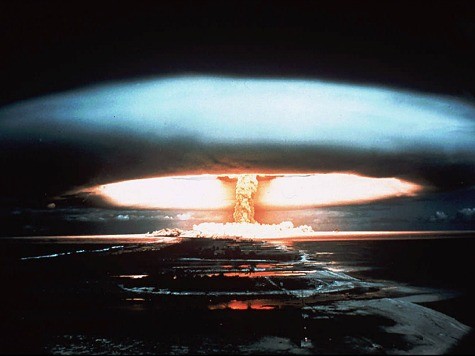The terrorist group Hamas claimed late Wednesday that it attempted to target Israel’s nuclear reactor in the desert town of Dimona by firing three long-range M-75 rockets at the facility. One of the rockets was destroyed in mid-flight by Israel’s Iron Dome system, and two fell harmlessly in the rocky Negev. However, merely by targeting the nuclear facility, Hamas has committed nuclear terrorism, according to United Nations treaties.
Article 2 (1) of the International Convention for the Suppression of Acts of Nuclear Terrorism states:
1. Any person commits an offence within the meaning of this Convention if that person unlawfully and intentionally…(b)…uses or damages a nuclear facility in a manner which releases or risks the release of radioactive material: (i) With the intent to cause death or serious bodily injury; or (ii) With the intent to cause substantial damage to property or to the environment; or (iii) With the intent to compel a natural or legal person, an international organization or a State to do or refrain from doing an act.
The treaty defines “nuclear facility” to include civilian nuclear reactors, as well as “Any plant or conveyance being used for the production, storage, processing or transport of radioactive material.” Hamas is not a UN member state, or a signatory to the treaty, but is bound by its provisions. (Indeed, the treaty is aimed at terror groups and exempts states, which are prevented from nuclear terrorism by other international treaties.)
Having failed once, there is no indication that Hamas will stop trying to target the Dimona facility, which has become an obsession for Israel’s enemies. Last year, Iran aired an animated video simulating attacks on the U.S. and Israel, and one of the targets was Dimona. The hope is to destroy Israel through nuclear contamination.

COMMENTS
Please let us know if you're having issues with commenting.